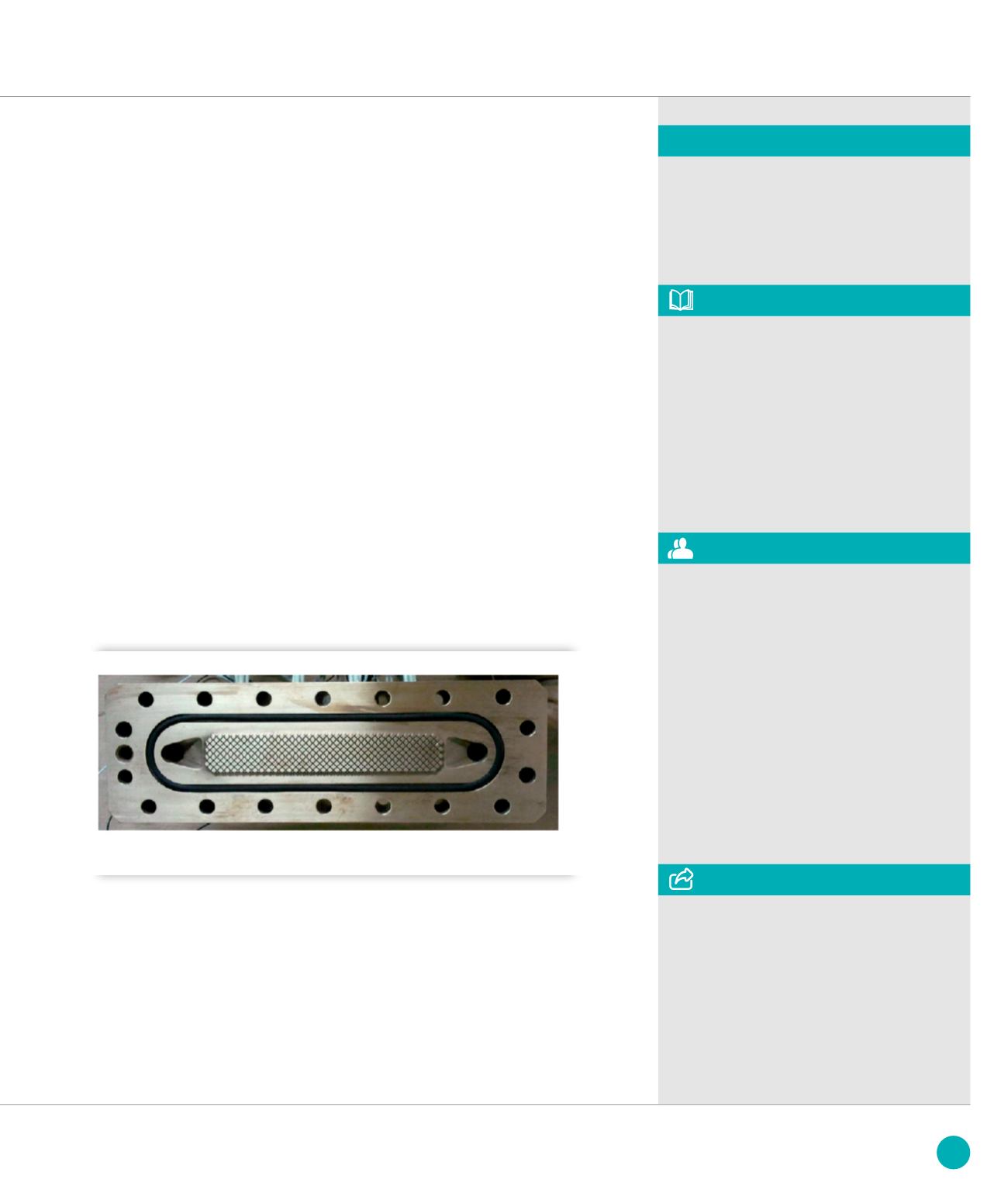
the most demanding cases. Therefore,
an in-house laboratory has been setup
and Ph. D. thesis ([1]) kicked off in
2009, with the objective of resolving
both above mentioned shortcoming,
i.e. develop and validate methods for
i/ obtaining correlations applicable for
high performance heat sinks and ii/
determination of the
local
heat exchange
coefficients, using an inverse method.
Three different prototypes of the heat
sinks (one with rectangular mini-channels
and two with diamond shaped fins) have
been manufactured and tested. Tests were
conducted both at atmospheric pressure
and in a vacuum chamber. For the
mini-channel tests, experimental results
were found to be in good correlation
with those available in the literature,
especially at low Reynolds (i.e. low fluid
velocity) numbers. However, in the case
of diamond shaped fins, poor agreement
was found and new correlations have been
proposed. Assuming identical external
dimensions and fluid cross section,
diamond shaped pins heat sinks have
been shown to be much more efficient
than mini-channels, the difference being
greater at low Reynolds number. Not
surprisingly, the induced pressure drop
is always more important for diamond
shaped fins. Therefore optimal solution
was demonstrated to be largely case
dependent, and should inevitably take into
account practical limitations (pressure
drop and fluid flow rate feasibility). In the
case of cooling optical devices, fluid flow
rate limitation may become even more
stringent due to flow-induced vibrations,
so that diamond shaped fins, though more
expensive, may become the solely viable
option.
Measurements of the thermal contact
resistance between parts of the heat sinks
were also conducted, which is particularly
relevant in the case of cooling of optics
on their back side.
A basis for a new, more efficient technique
for the resolution of the inverse heat
conduction problem is also proposed.
This technique has been verified to yield
faster results, by reducing the number
of numerical calculations necessary
to achieve convergence to a solution.
Robustness issues, however must be
solved before this technique can be
routinely used. This will require reduction
of sensitivity to measurement errors.
Conception-Engineering
ASSOCIATED PUBLICATION
N. Jobert* and J. Dasilvacastro
* Synchrotron SOLEIL, l’Orme des Merisiers,
St Aubin BP48, 91192 Gif sur Yvette Cedex,
France
CORRESPONDING AUTHOR
➋
Diamond shaped fins heat exchanger (prototype)
REFERENCE
[1] “Development and validation of high-
efficiency heat sinks for beamlines absorbers”,
A. Hamza Ph.D. Thesis, Université de Reims
Champagne Ardennes, January 2013
121
SOLEIL
HIGHLIGHTS
2013


